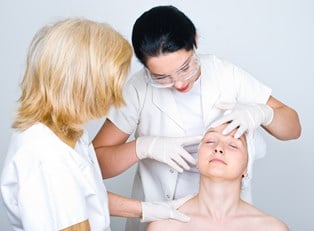Vitiligo is a disease that occurs when the body's melanin-producing cells die or stop functioning. Since melanin determines the color of your skin, hair, and eyes, this disease results in colorless blotches on these regions of the body. The rate and amount of color loss can be unpredictable. Vitiligo is not contagious or life-threatening, but it can be a disease that is difficult to deal with since it can negatively affect your self-confidence.
Vitiligo Symptoms
The most recognized sign of vitiligo is milky-white patches on the skin that are the result of dipigmentation. Typically, these patches will first appear on areas that have been exposed to the sun, such as your feet, hands, arms, face, and lips.
There are different types of vitiligo that determine the pattern of the patches on your body. Generalized vitiligo is the most common type, and it results in the discolored patches to progress symmetrically on corresponding body parts all over your body. Segmental vitiligo produces discoloration on only one side or part of your body, tends to affect younger patients, will typically only last for a few years. Lastly, focal vitiligo will only be found on one or few areas of your body.
Less common symptoms of this disease include:
- Loss of color in the mucous membranes, which are the tissues that line the inside of your mouth.
- Loss or change in color of the retina, which is the inner layer of your eye.
- Premature whitening or graying of the hair on your scalp, eyebrows, beard, or eyelashes.
- Discolored patches of skin around the navel, genitals, armpits, or rectum.
Vitiligo can begin to produce symptoms at any age, but it most commonly begins to appear before the age of 20.
Vitiligo Causes
Vitiligo is a condition that occurs equally in all races and genders. The only people who might be at a higher risk are those who have certain autoimmune diseases, such as Addison’s disease, vitamin B-12 deficiency anemia, or some thyroid disorders.
Doctors aren’t entirely sure what causes the melanin-forming cells to stop producing melanin or to die. There are speculations that it might be related to a disorder that attacks your immune system and destroys the melanin-producing cells in your skin. It also might have to do with heredity, since some families have increased incidences of the disease. In some people, vitiligo seems to be triggered by a specific event, such as emotional stress or sunburn.
Vitiligo Treatments
There are currently no medications that can stop the process of vitiligo. However, there are some treatments that can slow the process or improve the appearance of your skin. Some of the most common approaches include vitamin D, creams for inflammation, light therapy, laser therapy, and surgeries such as skin grafting. After receiving a diagnosis, your doctor will discuss what your options are so you can decide what approach might work best.



